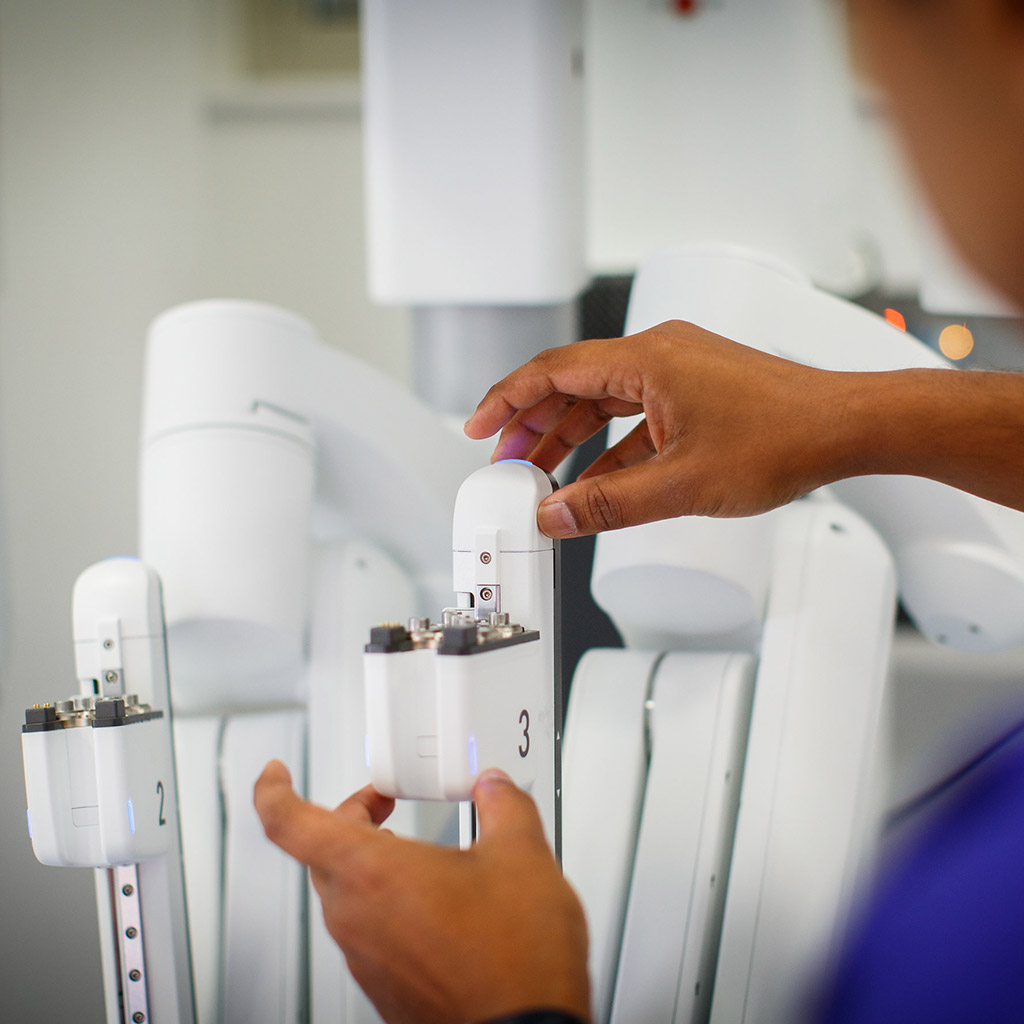Partial Nephrectomy or Partial Removal of the Kidney
The Procedure
This involves removal of part of the kidney ± the adrenal with surrounding fat and lymph nodes for suspected cancer of the kidney, using an incision either in the abdomen or in the side.
Normally, a full general anaesthetic will be used and you will be asleep throughout the procedure. In some patients, the anaesthetist may also use an epidural anaesthetic which improves or minimises pain post- operatively.
Frequently, a cystoscopic procedure is performed with the procedure to insert a tube into the kidney to assist with the procedure.

The kidney lump is usually removed through an incision in your loin although, on occasions, the incision is made in the front of the abdomen or extended into the chest area.
Robotic surgery can commonly be used for this operation and the suitability of the patients for this procedure will be discussed by the surgeon.
A bladder catheter is normally inserted post-operatively, to monitor urine output, and a drainage tube is usually placed through the skin into the bed of the kidney. Often, a small tube (or stent) is placed within the collecting system of the kidney to help with healing.
This will need to be removed by a second procedure, usually performed telescopically via the bladder under local anaesthetic.
Occasionally, it may be necessary to insert a stomach tube if the operation was particularly difficult, to prevent distension of your stomach with air.
You will be given fluids to drink from an early stage after the operation and you will be encouraged to mobilise early to prevent blood clots in the veins of your legs.
The wound drain will need to stay in place for 1 week in case urine leaks from the cut kidney surface.
The average hospital stay is 7-9 days.
Most procedures have a potential for side-effects and these are outlined below. Please use the check boxes to tick off individual items when you are happy that they have been discussed to your satisfaction:
Common (greater than 1 in 10)
- Temporary insertion of a bladder catheter and wound drain.
- Urinary leak from kidney edge requiring further treatment or a stent.
Occasional (between 1 in 10 & 1 in 50)
- Bleeding requiring further surgery or transfusions or removal of the whole kidney.
- Total nephrectomy will be performed if partial is thought not possible.
Entry into the lung cavity requiring insertion of a temporary drainage tube Need of further therapy for cancer. - Infection, pain or bulging of the incision site requiring further treatment.
Rare (less than 1 in 50)
- Anaesthetic or cardiovascular problems possibly requiring intensive care admission (including chest infection, pulmonary embolus, stroke, deep vein thrombosis, heart attack and death) involvement or injury to nearby local structures (blood vessels, spleen, liver, lung, pancreas and bowel) requiring more extensive surgery.
- Need for further treatment if histology suggests incomplete removal.
It will be at least 14 days before healing of the wound occurs but it may take up to 6 weeks before you feel fully recovered from the surgery. You may return to work when you are comfortable enough and your GP and surgeon are satisfied with your progress.
Many patients have persistent twinges of discomfort in the loin wound which can go on for several months. It is usual for there to be bulging of the wound when an incision in the loin is used, due to the nerves supplying the abdominal muscles being weakened.
If a ureteric stent has been inserted, you may notice that you pass urine more frequently with pain in the bladder region or at the tip of the penis after passing urine.
It will be at least 7-14 days before the pathology results on your kidney are available. It is normal practice for the results of all biopsies to be discussed in detail at a multi-disciplinary meeting before any further treatment decisions are made. You and your GP will be informed of the results after this discussion.
Once the results have been discussed, it may be necessary for further treatment but this will be discussed with you by your Consultant or Specialist Nurse.
If you develop a temperature, increased redness, throbbing or drainage at the site of the operation, please contact your surgeon or GP.
Any other post-operative problems should also be reported to your surgeon or GP, especially if they involve chest symptoms.

